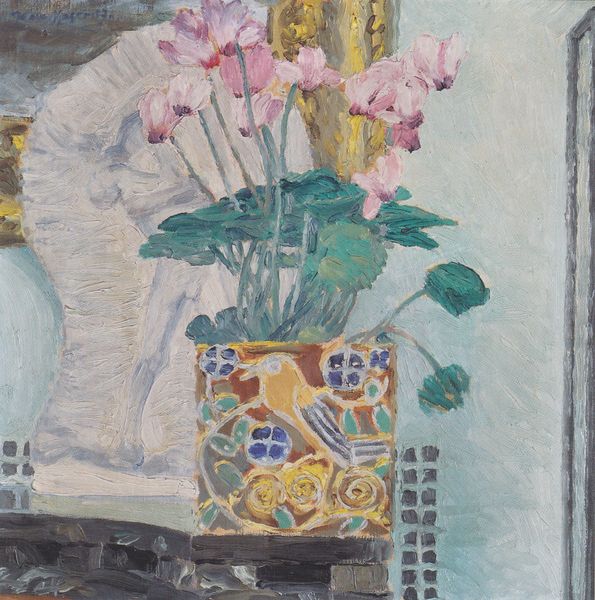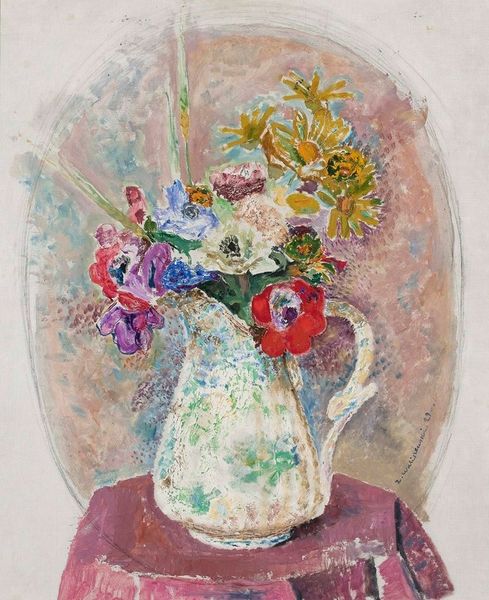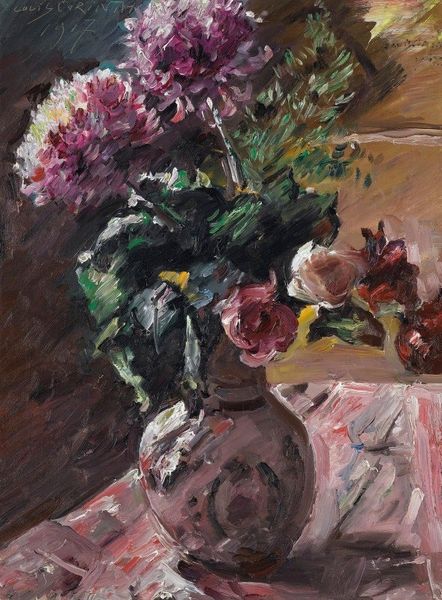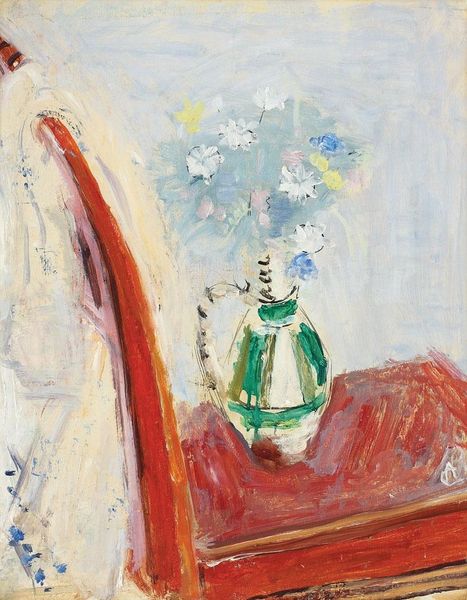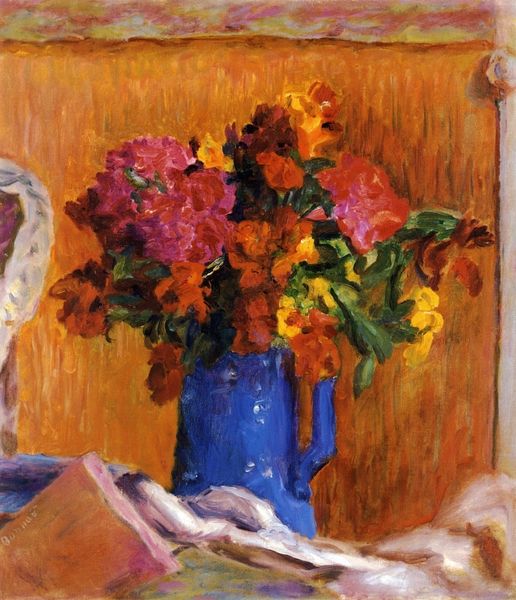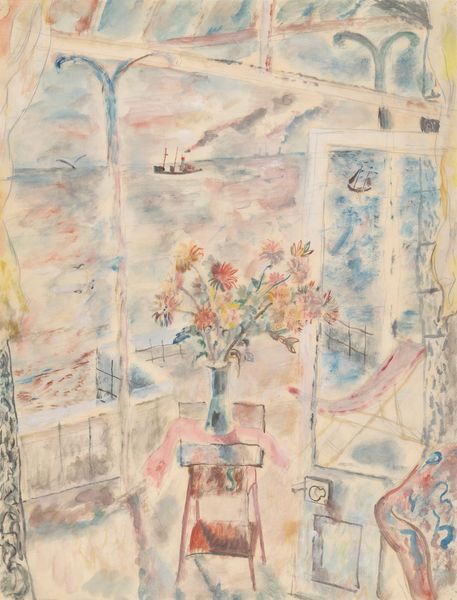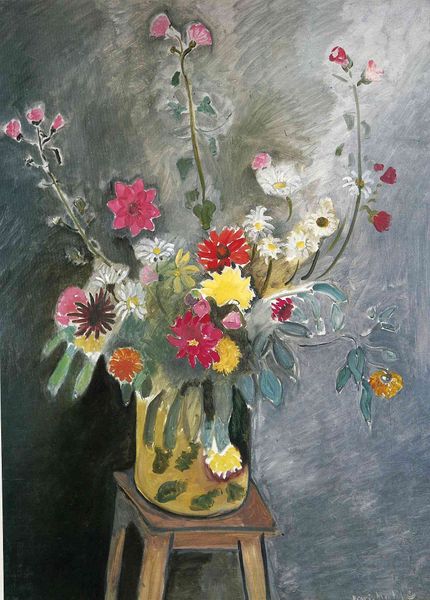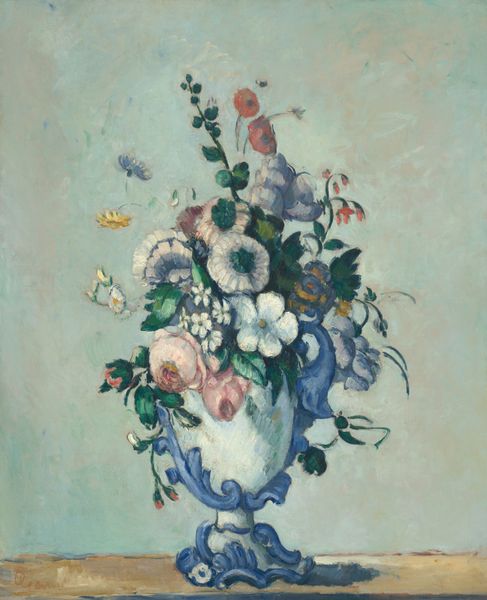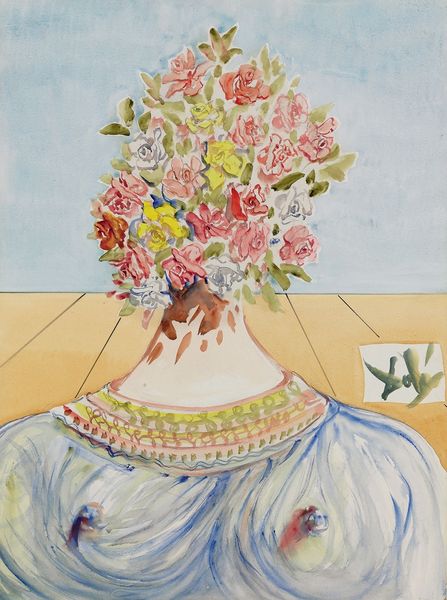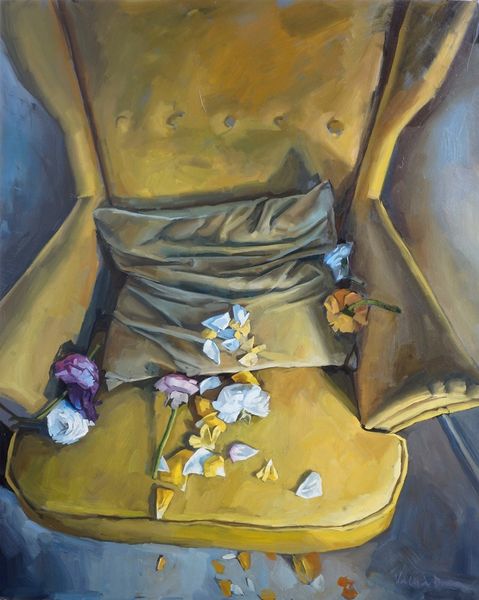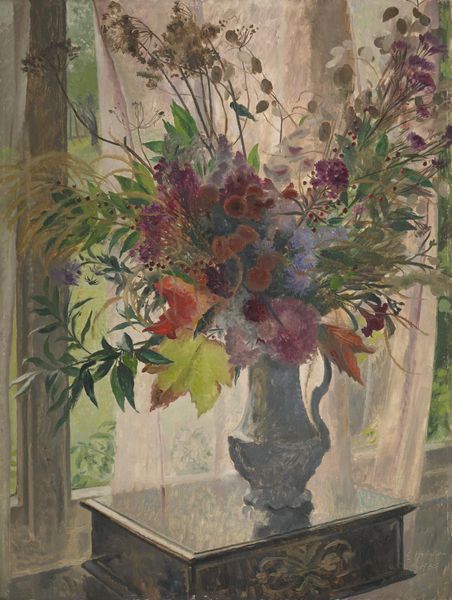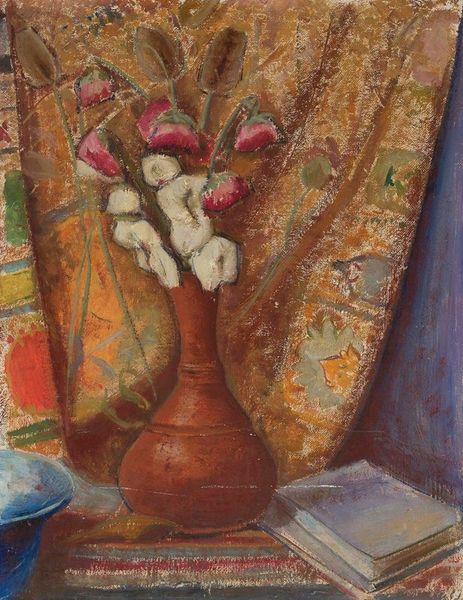
Copyright: Modern Artists: Artvee
Editor: This is Henri Matisse's "Fleurs ou Fleurs devant un portrait," painted in 1923 using oil paints. There's something both calming and unsettling about the arrangement of the flowers against the backdrop of the portrait. What do you see in this piece, particularly considering its historical context? Curator: I see a dialogue about representation, a challenge to traditional portraiture in the rapidly changing social landscape of the 1920s. The flowers, vibrant and alive, almost overshadow the portrait behind them. This resonates with feminist art theories that question the male gaze and its dominance in portraying women. Does the flatness of the space, the blurring of foreground and background, challenge conventional perspectives and patriarchal structures? Editor: That's fascinating! I hadn't considered the perspective shift as a potential challenge to traditional power dynamics. So, the flowers… are they, in a sense, reclaiming the space from the more conventional, posed portrait? Curator: Exactly! Think about the post-World War I era and women entering the workforce and demanding political rights. This could be read as Matisse’s participation in the movement. The domestic space, typically coded as feminine, is disrupted by this new arrangement. It's not simply a still life; it's a political statement about women occupying their own space, free from the confines of traditional representation. What does the ambiguity of the title suggest to you? Editor: Perhaps that the flowers are the portrait. It sounds obvious, but in this frame of interpretation, the life of the flowers surpasses in its beauty and vibrancy the portrait of a face that feels pale in comparison. Curator: Yes. And the intimacy of the scene also connects to larger socio-cultural shifts. This painting, in its quiet way, stages the changing roles and perceptions of women during this pivotal moment in history. Editor: This gives me a totally new appreciation for what Matisse was doing. I wouldn’t have initially thought of this painting in such politicized terms. Curator: And hopefully it will inspire others to view art through a critical lens.
Comments
No comments
Be the first to comment and join the conversation on the ultimate creative platform.
